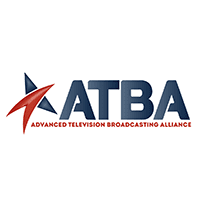On November 13, 2023, the Biden Administration released its National Spectrum Strategy, which is intended to reflect a government-wide approach to maximizing the nation’s spectrum resources. The strategy was developed by the National Telecommunications and Information Administration (NTIA) at the Department of Commerce in collaboration with the Federal Communications Commission (FCC).
NTIA developed the National Spectrum Strategy in response to a Presidential Memorandum titled Modernizing United States Spectrum Policy and Establishing a National Spectrum Strategy.
The Strategy identifies more than 2,700 megahertz of spectrum for further study for potential repurposing, including the 3.1-3.45, 5.03-5.091, 7.125-8.4, 18.1-18.6 and 37.0-37.6 GHz bands. Other highlights of the Strategy include: recommending the formation of a new “collaborative framework” for spectrum planning; proposing to establish new models for evaluating spectrum use and assessing the impact of spectrum reallocation; and launching a “moonshot” effort and national testbed to advance innovation in and development of spectrum management and dynamic sharing technologies, including the use of artificial intelligence.
Absent from the strategy is any mention of broadcasting—either as a service that relies on spectrum to advance national interests or as a potential band of spectrum that could be used to address the constantly growing demand for wireless bandwidth. Indeed, notwithstanding comments filed by the National Association of Broadcasters urging NTIA to “recognize and reflect the importance and value of the broadcast industry to the economy and to our common culture,” the word broadcast does not appear once in the National Spectrum Strategy.
The failure to consider broadcasting as part of the National Spectrum Strategy represents a significant and potentially costly oversight. Broadcasting continues to provide the most efficient use of spectrum, with the ability to simultaneously reach millions of viewers using a single 6 MHz channel. Moreover, with ATSC 3.0, broadcasters can continue to provide a free, over-the-air video service while allocating excess spectrum to alleviate other spectrum demands.
While the National Spectrum Strategy is a significant document, it is not the final say on the nation’s spectrum allocation roadmap. For example, NTIA is expected to issue a forthcoming implementation plan, which will identify the timeline for completing various strategy objectives and the parties responsible for those objectives. Broadcast spectrum could still appear in a future spectrum plan from NTIA or the FCC, but broadcasters are justifiably concerned about the complete disregard for broadcasting in the National Spectrum Strategy.





